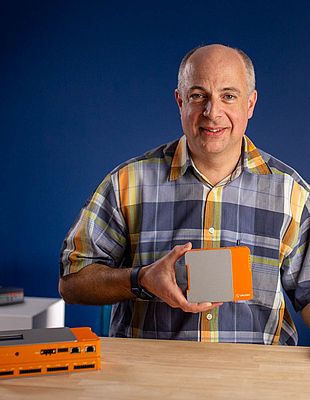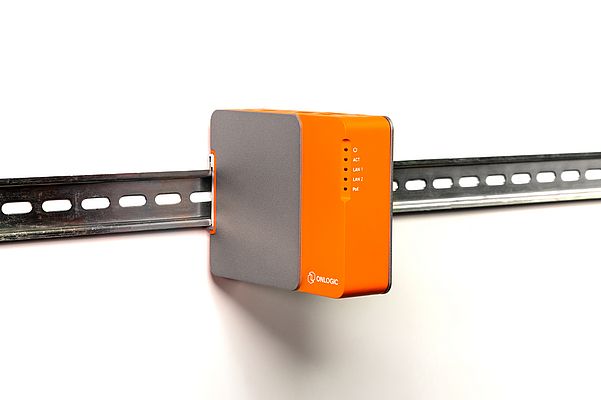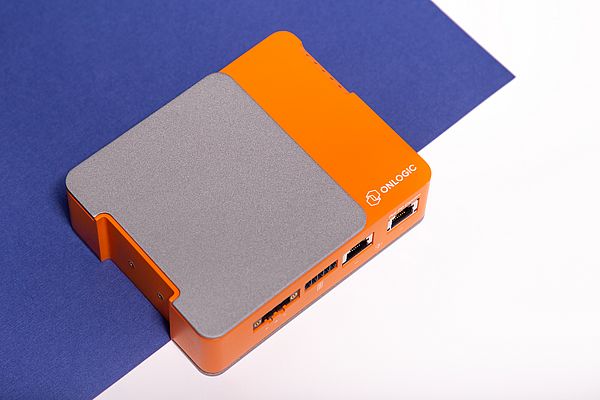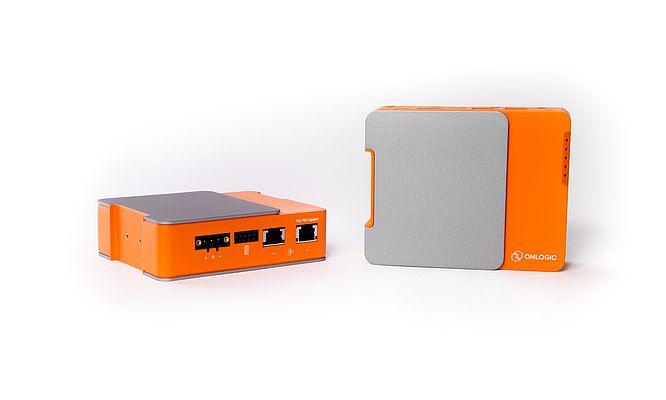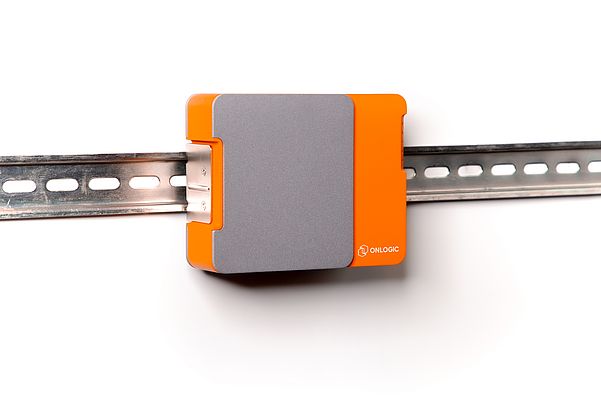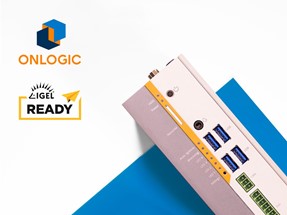IEN D-A-CH: Can you briefly give our readers some information about the company's development and product portfolio?
Dr. Michael Kleiner: OnLogic began developing and manufacturing industrial computer hardware shortly after our founding in 2003. We specialize in small form factor, fanless systems that are built to survive where other computers would fail. Our customers around the world include the most well known innovators and industry leaders in manufacturing, energy management, smart agriculture, smart city technology, logistics, transportation, and automation of every kind.
Our computers range from palm-sized IoT gateways and ultra-reliable rugged devices, to touchscreen HMIs and advanced edge servers. Our mission is to help our customers solve their most complex technology challenges with high quality hardware. We do that through a combination of leading edge technology, in-house industry expertise and partnerships with leading software companies. We have been serving the entire European market from our European Headquarters located in the Netherlands since 2011, which allows us to offer more localized support and faster shipping to our German customers. We continue to see renowned German customers already finding us when looking for solutions to their technology challenges. As such, we've been expanding our German market presence and growing our German team of hardware specialists.
You are currently preparing the product launch of your IPC solution based on the Raspberry Pi 4. Which of the Raspberry PI's features qualify it for this demanding field of application?
Our upcoming Factor 201 is an industrial computing solution based on the industrial-grade Raspberry Pi CM4 module. For the majority of our industrial customers, mounting a standard Raspberry Pi in a consumer-grade case isn't going to be sufficient to ensure long-term reliability and project success. We've taken the Raspberry Pi Compute Module 4, which has the same computing power as the Raspberry Pi 4, but none of the I/O, and combined it with our own carrier board and a custom-designed industrial chassis to provide a truly IPC-grade solution. The development and customization capabilities of the CM4, along with our carrier board allow us to offer industry-targeted I/O connectivity and features.
Raspberry Pi computing is desirable in the industrial space due to its economy of cost and low power consumption. There are other inexpensive solutions on the market, however Raspberry Pi benefits from their passionate community of developers who have created extensive documentation and proven the platform’s capability through real-world implementations in industrial applications. We're excited to provide that community of creatives with a truly industrial platform to work with.
Which changes and modifications do you implement to ensure long-term capability in the application?
Here at OnLogic we're known for our fanless and ventless industrial computers. We’re applying our years of experience and knowledge in the form of our carrier board and industrial chassis to help unleash the potential of Raspberry Pi for industrial use.
Starting from the outside, the chassis is both fanless and ventless to avoid the ingress of dust and debris which can be common in an industrial environment. We accomplish this through the latest evolution of our Hardshell™ fanless technology. The aluminum body panel improves the rigidity of the structure of the device while transfering heat directly from the internal components to the outside of the chassis without a fan. Moving parts are a common point of failure and can compromise the thermal management of the entire system in the event of a fan failure. That's why the Factor 201 is a completely solid-state device with no moving parts to wear down over time. Finally, we integrated a DIN Rail mount directly to the chassis to provide ease of installation in embedded applications.
Inside of the Factor 201, the Raspberry Pi CM4 module is mated with our custom carrier board. The system supports up to 8 GB of memory and 2 TB of storage along with optional features including Wi-Fi, 4G LTE with provisions for future 5G support, and TPM 2.0 for added security. The Factor 201 is able to operate reliably in temperatures ranging from -20° to 60°C, while providing the connectivity our customers need, including a pair of 1 GbE LAN ports, one USB 3.2 port, two USB 2.0 ports, one HDMI port, one USB-C port (for OTG), and an RS-232/422/485 terminal block. We’ll also offer the ability to power the entire system via POE-PD - meaning some applications will only require a single cable for installation and operation.
Since the suitable, feature-rich software and also its user-friendliness is becoming more and more important as an interface to the operator/user, how do you assess the software supply for the industrial area?
The wide variety of software already available for use with Raspberry Pi was one of the reasons we were excited to develop an industrial product on this particular ARM architecture. Software plays a critical role in the processes our hardware solutions enable. We value software so much that we partner with industry leaders such as IGEL, AWS, and Inductive Automation to verify compatibility with our hardware and pre-image their software on our systems before shipping. We’ve already been in-touch with Inductive Automation to add our Raspberry Pi powered computer to their Ignition Edge Onboard program shortly after initial release. We see the affordability and flexibility of the Factor 201, as well as future CM4-based solutions, enabling our software partners to provide a cost-effective industrial computing solution to our mutual customers.
Where do you see the development and distribution for the industrial Raspberry Pi in the coming years? Where will be the primary fields of application?
We expect Raspberry Pi, and other ARM based processing platforms, continuing their current trajectory of high growth in the near future - especially in data collection applications that have traditionally been home to PLCs and RTUs. It’s exciting to think about how much refinement of processes will be possible when basic data collection points can be replaced with connected hardware capable of intelligent data handling. Many of our clients are creating, implementing or retrofitting full-facility solutions, and the Factor 201, as well as our upcoming Factor 202 and the other ARM-based gateways we expect to offer in the future, can be used from everything to tracking incoming raw materials and providing work instructions, to warehouse management for finished goods or tracking and control of automated guided vehicles in a warehouse. The small size and customization capabilities of Raspberry Pi makes the applications virtually limitless.
Raspberry Pi's lower cost and power efficiency, combined with the fanless compact design, wide temp, and connectivity options of the Factor 201 enable large distributed edge deployments in more challenging environments. However, that growth in ARM technologies isn’t mutually exclusive to x86. We also foresee growth in x86 processing as more computing power is needed closer to the edge, enabling on-prem data processing, industrial automation, and real-time machine vision.
Material shortages in a wide range of different areas, including electronic components and chips, are unfortunately a major issue in all industrial sectors at the moment. How do the shortages affect the availability of your products at the moment? How do you assess the general prospects for short- and medium-term development in this area?
Supply chain challenges have been very real in recent years, however our customers still need hardware solutions to continue to move their businesses forward. We faced the challenge head-on and have taken a very proactive approach. Though this has been, and continues to be a massive lift, it has enabled us to ship products when many of our competitors couldn't and has been a key contributor to our continued growth. We've worked hard to maintain close alignment of our sales, product management, supply chain, and engineering teams to identify available system configurations capable of meeting our customers’ needs. We’ve found our customers appreciate the transparency and access to our hardware experts. We also credit our amazing supply chain team, including the team in our Taiwan office who are in constant communication with our vendors and always looking for the most efficient ways to get our clients the systems they need.
Our partnerships have been equally as important in overcoming materials challenges. Our partners and suppliers have enabled us to continue on our growth trajectory even during this period of component availability challenges. Partnerships also provide us with transparency on development roadmaps and allow us to align to industry trends - influencing our future development and letting us set a clear roadmap, both internally and with our customers.
Kay Petermann, IEN D-A-CH


